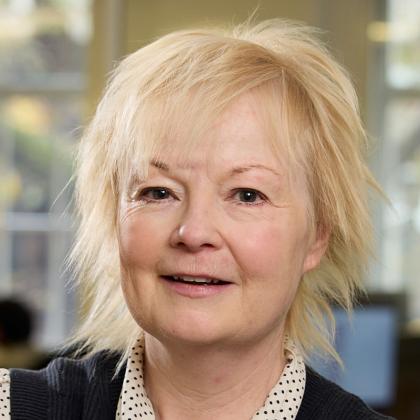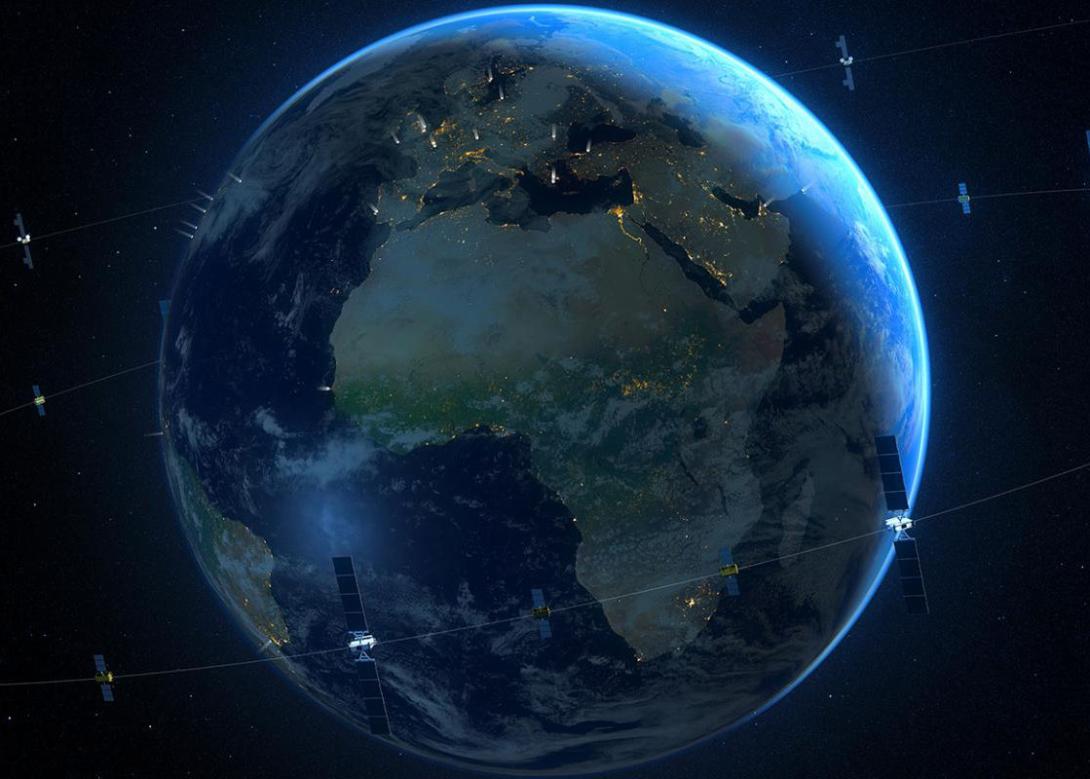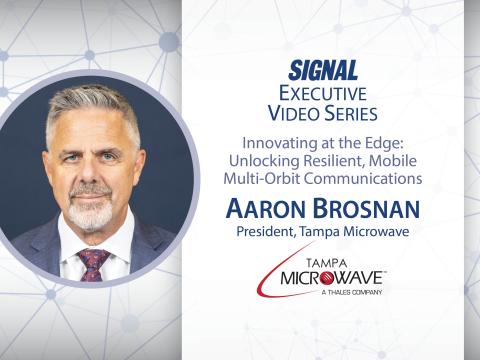Direct-to-Device Brings Seamless Satellite Service to End Users
The last several years have seen a flurry of partnership activity as telecommunications, satellite communications (SATCOM) and space-related companies jockey into position to provide the next biggest thing: direct-to-device, or D2D, services.
For the U.S. Department of Defense, D2D means great possibilities around intelligence, surveillance and reconnaissance (ISR) capabilities; unmanned aerial vehicles (UAVs)—especially smaller, so-called group one UAVs—autonomous vehicles and certain naval vessels.
“Direct-to-device means new functionalities, getting into autonomous vehicles, moving into over the horizon, ISR at the group one level, perhaps even being able to multicast that information from a group one UAV to company, battalion, brigade, division or even back to Washington, D.C., as necessary,” said Michael Geist, vice president of product management, SES Space and Defense, in an interview with SIGNAL Media. “Those are just different applications that don’t exist today or exist with any scale today that can be enabled by a direct-to-device capability.”
For example, with ISR, possible improvements are considerable. Integrating satellite connectivity capabilities into smaller UAVs with a device that is at least as small and light as a cellphone goes far beyond the typical connections to a so-called group four, large ISR platform (such as an MQ-9), which hosts traditional and heavier network capabilities.
“Direct-to-device enables us to move not only past group three, down to group two and even group one, where you don’t have the comms payload package and you don’t have the capability set to host traditional core SATCOM capability,” Geist stated.
D2D is also a promising addition to autonomous vehicles, which use a large number of sensors and have the associated need to move sensor backhaul data in a high-capacity manner.
Moreover, for the military, D2D doesn’t necessarily mean satellite connectivity to a cellphone only. It can also mean tactical radios, Geist continued.
“And those can be beyond line of sight, tactical radios with special waveforms in them,” he said. “They can have type one encryption, perhaps, and they can have other things in them which enable them. And at low-Earth orbit (LEO), direct-to-device can provide those same tactical radio capabilities with new functionalities, higher capacities and lower latencies than what those field of tactical devices would have provided in the past.”
D2D can also mean transparent capacity on an LEO satellite that facilitates traditional devices that are already militarized for those types of environments, whether that’s for electronic warfare, cyber attacks, spoofing, encryption, security and other capabilities, Geist said.
“Deployed command and control is another example, and alternate path for resilient connectivity is another application,” Geist said. “If I thought it through for 10 more minutes, I could probably just keep going with possible direct-to-device applications. It is an extension to what we do today, just at a higher scale, down to a lower level, and perhaps with capabilities that I haven’t even thought about yet.”
At a high level, the spectrum options for D2D generally fall into two buckets: mobile satellite service (MSS) spectrum and terrestrial mobile use, explained Janette Stewart, a partner at U.K.-based Analysys Mason, who presented about D2D, along with her colleagues, during a recent webinar.
For MSS spectrum-based D2D, satellite companies—such as EchoStar, Globalstar, Iridium, Omnispace, SES, Viasat and others—usually rely on L-band or S-band spectrum, she said.
Meanwhile, for terrestrial mobile use for D2D services, the players usually include mobile network operators (MNOs), such as AT&T, T-Mobile or Verizon. In specific markets, MNOs are collaborating with satellite operators to use the terrestrial spectrum (the international mobile telecommunication bands assigned to that MNO) to provide direct connection from satellites to a mobile device, Stewart noted. Satellite operators partnering with the MNOs to use terrestrial spectrum for D2D include AST SpaceMobile (AT&T and Verizon), Lynk Global (with the Portuguese phone company MEO), and Starlink (T-Mobile), with its direct-to-cell satellite service.
Companies going for large-scale deployments of D2D will usually have lower throughput or the opposite, with higher throughput, but at a lower scale. The niche that SES Space and Defense is pursuing is near real-time, persistent, high-throughput capabilities for users, Geist explained. SES Space and Defense, a proxy company of SES, takes the commercial capabilities that SES delivers to the commercial marketplace and applies those to U.S. Department of Defense problems.
“Some of those applications are going to be dictated by the capabilities of the spacecraft,” Geist clarified. “Some spacecraft direct-to-device companies are going to be more focused on things like text messaging, because they want to have a lot of scale but have very little throughput within that high-scale capability. Other companies are going to focus on lesser scale but significant broadband connectivity. So, the beauty of this for different direct-to-device satellite operators is going to be that there are going to be different operators pursuing different versions of capability.”
In addition, electronic device companies that manufacture cellular phones have also entered the market to enable D2D capabilities for their end users.
“We are seeing a lot of investments from technology companies, such as Apple, which is investing heavily in Globalstar and their D2D service,” explained Lluc Palerm, research director, Analysys Mason. “And we see that these technology companies have cannibalized markets that would naturally be for mobile operators, or MNOs.”
MNOs and satellite companies will have to navigate whether they have enough demand for real-time persistent regional connectivity to warrant launching and flying a spectrum-regulated satellite constellation globally or change dedicated frequency, Geist advised.
Partnering with MNOs means those companies own different bands of frequency. The frequency spectrum of AT&T is different from Verizon, for example, and is also different from companies in Europe, such as Orange or Vodafone.
“So, either you have to have enough scale in a region to pay for the constellation, which is going to be flying globally and only useful over your region, say, less than 10% of the time, or you’re going to have to work with the International Telecommunications Union and you are going to have to change the frequency spectrum assignments such that you can have globally persistent spectrum for users,” Geist emphasized. “You can see how this chopped up world of frequency spectrum could cause problems for space-based cellular base stations that do not stay in a place.”
As D2D is a developing market, international standards are only now being considered. The governing global body for wireless communications standards, known as 3GPP, is looking at D2D as part of its 2026 standards release, with draft section 17/18 applying to D2D services, Stewart shared.

If I thought through it for 10 more minutes, I could probably just keep going with possible direct-to-device applications. It is an extension to what we do today, just at a higher scale, down to a lower level, and perhaps with capabilities that we haven’t even thought about yet.
How companies position themselves will have implications for the military in finding the right D2D options for warfighters. Contracting with AT&T, Verizon or T-Mobile means capabilities would be available for the contiguous United States; outside of that, the military would rely on foreign carriers or use MSS from satellite companies.
“The military business does not scale enough by itself to warrant a standalone constellation,” Geist noted. “Nor do I think the military wants to have its own standalone constellation. So, if companies can provide them with capabilities that augment an existing network, that fulfill their operational and usability needs, then that’s a solution.”
SES Space and Defense has had quite a few discussions about D2D with the Army, as well as the Navy, Marines, Air Force, Special Operations Command, and the intelligence community. “I don’t think there’s one that we haven’t been in contact with,” said Geist.
But while D2D does offer the Department of Defense great promise, it is not without challenges, he warned.
“What frequency should be employed in direct-device capabilities?” Geist asked. “Should the frequency employed be in alignment with traditional capabilities, or should it be something else? There are cybersecurity-related concerns, electronic warfare security concerns. There are back-end terrestrial connectivity concerns. The different services that I’ve spoken with are extremely excited about the promise of what direct-to-device can provide for the warfighter. But we can’t just enable it as a commercial capability. This is a warfighting capability. We have to make it such that we’re not putting troops’ lives at risk.”
To iron out some of the issues and draw down risk, SES Space and Defense is one of six providers on NASA’s Communications Services Project, an experiment aimed at creating a marketplace for real-time, persistent low-Earth orbit (LEO) backhaul connectivity and assured telemetry tracking and control capabilities. The project aligns not only with NASA missions but also with commercial applications like D2D to minimize future costs for government applications, Geist shared. They are about halfway through the multiyear effort.
“We have had to create interfaces for LEO satellite operators to be able to connect to our medium-Earth orbit constellation and even our geostationary constellation,” Geist described. “We have had to create interfaces so that we can work with Earth observation companies, D2D and other LEO-type companies to enable them to build spacecraft such as those spacecraft that can point up and offload their capabilities to us for download into a terrestrial network.”
They are scheduled to perform functional demonstrations with NASA in the next 12 to 14 months, along with some launches to demonstrate those capabilities live in space.
The company is also assisting a prime company that works with the Defense Innovation Unit in developing technologies associated with hybrid space architectures. D2D-related capabilities are being considered as part of that hybrid space architecture portfolio, Geist noted.
For MSS, SES Space and Defense is also partnering with Lynk to create capabilities around persistent geostationary telemetry tracking and control, as well as for offloading of their broadband connectivity.
“In addition to Lynk, we are in discussion with a variety of other direct-to-device providers, as well as other LEO technology companies and service providers like Earth Observation,” Geist stated.

In general, direct-to-device connectivity will come from either mobile satellite service spectrum—from satellite communication providers like Iridium, SES or Viasat—or terrestrial mobile spectrum—from mobile network operators like AT&T or Verizon, explains Janette Stewart, a partner at U.K.-based Analysys Mason.
AT&T, meanwhile, began working with AST in 2018, looking at how they could use satellite technologies to extend their terrestrial coverage, to eliminate “white spaces” or areas that do not have cellular coverage, such as national parks where regulations prohibit building cell towers or very rural areas, said John Wojewoda from AT&T headquarters, who is in charge of roaming and satellite business for the company. From a device perspective, D2D looks similar to a terrestrial network, perfect for an MNO.
AT&T chose AST as a D2D partner given AST’s LEO satellite profile, the lower latency it offers—basically a large, phased array in space—as well as more optionality for capabilities.
“AST has some unique technology that corrects for the distance in space,” he noted. “The fact that those satellites are moving at high speed to be able to make it look like a traditional cellular network to a device [is crucial]. We work very closely with them to integrate that into our network. The AST satellite [beam] will come back to a ground station on Earth and then integrate to the AT&T network in the AT&T core, so that we can provide services consistently across our traditional terrestrial network. To get broadband-like speeds of data, we believe you need that LEO satellite solution.”
AT&T is actively testing with AST. The satellite company has five commercial vehicles in LEO, and they are operating under a special temporary authorization (STA) from the Federal Communications Commission. Eventually, AST’s constellation will provide 24/7 coverage across the United States, Wojewoda said.
“Those satellites have spot beams that light up certain geographies, and under those STAs, we have activated certain cells, and then we’re able to go into the field and take measurements and do testing today with the limited number of satellites,” Wojewoda offered. “As more satellites get launched, the window of time that the service is available will expand until we get to the point where it is available for the full day, and we are able to launch commercially.”
In addition, AT&T is conducting the development needed to support D2D capability on the AT&T core network, as well as completing the necessary regulatory work. “We will be making announcements in the near future, on timing and what those services look like,” he shared. “It is going to evolve quickly, in support of more and more services.”
Satellite solutions available to devices today are primarily for texting only. Future D2D services would go beyond texting to include usable voice and data experiences.
“I think that is really where this is going to go is to a more feature-rich service,” Wojewoda concluded.

As more satellites get launched, the window of time that the service is available will expand until we get to the point where it is available for the full day, and we are able to launch commercially.





Comments